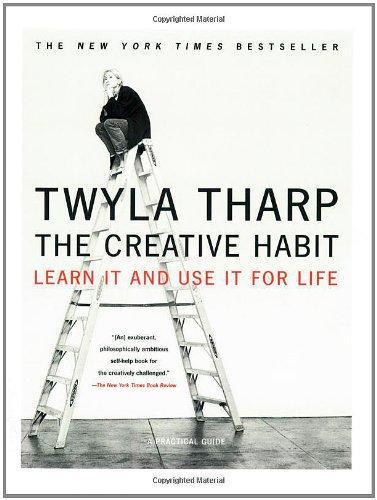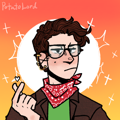The Creative Habit
3 stars
1) "More than anything, this book is about preparation: In order to be creative you have to know how to prepare to be creative."
2) "It's vital to establish some rituals—automatic but decisive patterns of behavior—at the beginning of the creative process, when you are most at peril of turning back, chickening out, giving up, or going the wrong way."
3) "You can't just dance or paint or write or sculpt. Those are just verbs. You need a tangible idea to get you going. The idea, however minuscule, is what turns the verb into a noun—paint into a painting, sculpt into sculpture, write into writing, dance into a dance."
4) "Scratching is what you do when you can't wait for the thunderbolt to hit you. As Freud said, 'When inspiration does not come to me, I go halfway to meet it.' How is that different from a movie producer calling …
1) "More than anything, this book is about preparation: In order to be creative you have to know how to prepare to be creative."
2) "It's vital to establish some rituals—automatic but decisive patterns of behavior—at the beginning of the creative process, when you are most at peril of turning back, chickening out, giving up, or going the wrong way."
3) "You can't just dance or paint or write or sculpt. Those are just verbs. You need a tangible idea to get you going. The idea, however minuscule, is what turns the verb into a noun—paint into a painting, sculpt into sculpture, write into writing, dance into a dance."
4) "Scratching is what you do when you can't wait for the thunderbolt to hit you. As Freud said, 'When inspiration does not come to me, I go halfway to meet it.' How is that different from a movie producer calling up a gifted writer and prodding him to suggest a plot line of 'two men and a bear'? If you go halfway, you double your chances of getting a toehold on an idea."
5) "On Saturday, September 8, 2001, my company gave a free performance for two thousand people in the plaza that separated the twin towers of New York's World Trade Center. We were the last people to perform there. Three days later, the day of the attacks, I was putting the finishing touches on a theatrical project to which I had devoted most of my year, preparing for a rehearsal in the late morning at a studio in midtown Manhattan. As the chaos of 9/11 developed, I thought about working with my dancers that day, but decided it was impossible, for so many reasons. I phoned all the dancers to check on their welfare, and I told them there was no obligation to attend rehearsal the next day. Yet they all showed up, ready for work, arriving in a shaken Manhattan, with its bridges and tunnels only just reopened, from Brooklyn, Staten Island, New Jersey, and Westchester County to the north. We could have easily become absorbed by the tragedy, lost in it and paralyzed by it, but what came back to us was the instinct to dance. I began as a dancer, and in those days of pain and shock I went back to where I started. Creating dance is the thing I know best. It is how I recognize myself. Even in the worst of times, such habits sustain, protect, and, in the most unlikely way, lift us up. I cannot think of a more compelling reason to foster the creative habit. It permits me to walk into a white room... and walk out dancing."


